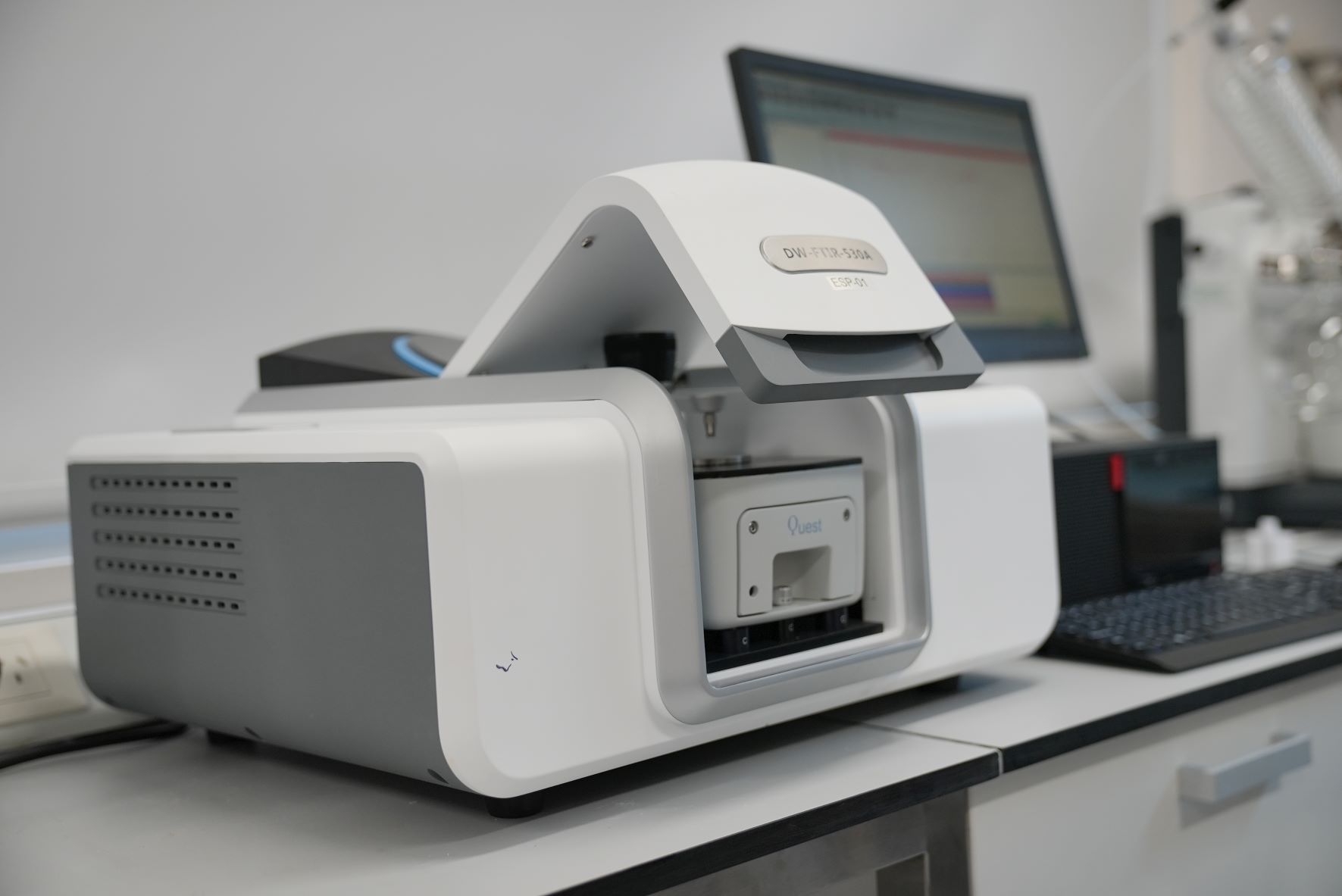
At Stämm we set out to revolutionize the way we understand bioprocesses. To do so, a big part of our work is dedicated to gaining a better understanding of cellular organisms. As you might imagine, when working with biomolecular structures you face one essential problem: everything is really tiny.
Nowadays only advanced microscope technology can capture elements on a molecular level, and access to it is nearly impossible.
Thankfully, we count with a team of experts that knows their way around chemistry and can apply their knowledge to enhance innovative solutions right here, in-house.
So, how do we determine substances on a molecular level?
IR-Spectroscopy is used for the quantitative and qualitative determination of known substances whose identification is carried out based on a reference spectrum, or for the structural elucidation of unknown substances. In other words, exposing a substance to infrared light radiation allows us to analyze the molecular structure of the compound.
This is possible due to molecular vibrations caused by said radiation.
Much as you can identify people by the way they walk and not necessarily by seeing their faces, atomic bonds show a specific vibration pattern under the influence of infrared light. Molecules can swing within the direction of the bond (tension) or perpendicularly to it (bending), they can move symmetrically or asymmetrically and at different speeds, for strong bonds move slower than weaker ones, and also the atomic weight of the elements varies.
Depending on the state of matter of the substance we want to analyze – solid, liquid, or gaseous-, different techniques of IR-Spectroscopy must be applied. But in general lines, the final measuring concept stays the same.
Since we already know the wavelength of infrared light, we can expose substances to this constant using a laser beam, and measure the outcoming light in the form of a spectrum, – hence the name “spectroscopy.”
The molecule bonds either transmit or absorb the light creating a wave-like grid for us to interpret.
Knowing the different absorption characteristics of compounds gives us the possibility of identifying different bonds and determining the presence of certain substances in the sample. If, for example, we are analyzing food, we can determine its protein, lipid, or water content.
IR-Spectroscopy also allows us to study the behavior of substances. By using a so-called molecular probe, a group of molecules or atoms with specific measurable properties, to interact with our sample, we can observe the changes happening on its surface. This way we can make out where free superficial protons (H+) decide to bind and therefore define what acid group they are forming, which comes in handy when we want to decide on a catalyst.
We can also determine if we are handling substances that present involuntary contamination- and this is very important for reaching the perfect functioning of our Bioprocessor.
At Stämm we are building the Bioprocessor with our own biomaterials and must make sure these are properly polymerized before we can put them in contact with any other substance- this way we can confirm that the bioreactors components don’t interfere with the cell-culture growing within- guaranteeing a high-quality end product.
By Hannah Kreher
